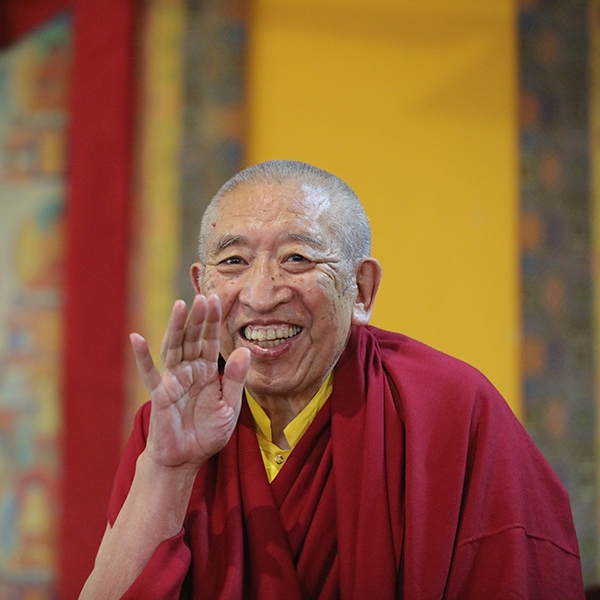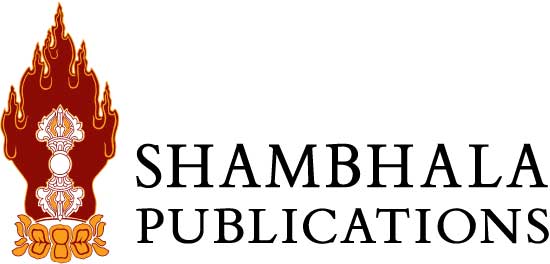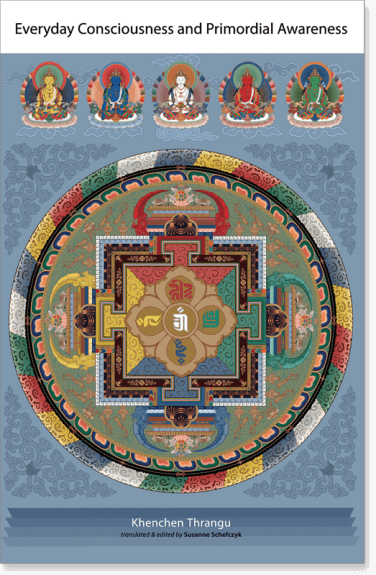Everyday Consciousness and Primordial Awareness
By Khenchen Thrangu
Edited by Susanne Schefczyk
Translated by Susanne Schefczyk
-
Amazon eBook Download
Privacy PolicyBefore you go, sign up to receive news & promotions from Shambhala.com
Google eBook Download
Privacy PolicyBefore you go, sign up to receive news & promotions from Shambhala.com
Nook eBook Download
Privacy PolicyBefore you go, sign up to receive news & promotions from Shambhala.com
Snow Lion10/16/2011Pages: 124Size: 5.5 x 8.5ISBN: 9781559393799DetailsThis introduction to Buddhist psychology supplies essential instructions for successful meditation practice. Rinpoche presents meditation practices that can powerfully influence and ultimately transform the mind into the purified mind of a Buddha. He clearly describes how consciousnesses operate in everyday perception and how at the time of Buddhahood, these same consciousnesses express the five primordial wisdoms of the five Buddha families.


Susanne Schefczyk studied under Khenpo Tsultrim Gyamtso Rinpoche from 1980 on, and teaches under his guidance Tibetan language, philosophy, meditation, and body exercises. She was a full-time teacher at the Marpa Institute for Translators in Kathmandu, Nepal, from 1988 through 1997. Within this time she also served for several years as the program coordinator and secretary to the institute. She translated internationally for the Three Elders of the Karma Kagyü Lineage Khenpo Tsultrim Gyamtso Rinpoche, Tenga Rinpoche, and Thrangu Rinpoche into English and German languages, as well as for many important Nyingma and Kagyü masters. She taught Tibetan language and philosophy at the Universities of Hamburg and Kiel, at dharma centers, and at hospice trainings. Currently she mainly teaches mathematics at a German school.

Susanne Schefczyk studied under Khenpo Tsultrim Gyamtso Rinpoche from 1980 on, and teaches under his guidance Tibetan language, philosophy, meditation, and body exercises. She was a full-time teacher at the Marpa Institute for Translators in Kathmandu, Nepal, from 1988 through 1997. Within this time she also served for several years as the program coordinator and secretary to the institute. She translated internationally for the Three Elders of the Karma Kagyü Lineage Khenpo Tsultrim Gyamtso Rinpoche, Tenga Rinpoche, and Thrangu Rinpoche into English and German languages, as well as for many important Nyingma and Kagyü masters. She taught Tibetan language and philosophy at the Universities of Hamburg and Kiel, at dharma centers, and at hospice trainings. Currently she mainly teaches mathematics at a German school.
"With characteristic cogency, clarity, and precision, Thrangu Rinpoche lays out the Buddhist description of mind in both its conventional and tantric dimensions. Then he invites us further in showing how these teachings give voice to the subtlety of meditation experience and can lead us to the profundity of the awakened state itself." —Reginald A. Ray, Naropa University, author of Indestructible Truth and Secret of the Vajra World
"Khenchen Thrangu Rinpoche, a preeminent Tibetan master, has presented an accessible and precise introduction to the inherently awakened mind at the heart of confusion and suffering. While this text is invaluable for the scholar, it is even more crucial for the Vajrayana practitioner." —Judith Simmer-Brown, PhD, Professor, Naropa University
"Khenchen Thrangu Rinpoche is among the wisest and most compassionate Buddhist masters alive today. I have no doubt that this book will be a great inspiration and support for all serious Dharma students who read it and put it into practice." —Pema Chödrön, author of When Things Fall Apart
"With the help of this introduction to Buddhist psychology, successful meditation practice is distinctly possible. . . . Distinctively clear and vivid." —Mandala Magazine
"There is no shortage of brief introductions to Buddhist practice, especially from the Tibetan Buddhist perspective. What makes Rinpoche's work distinctive is the clarity and vividness of his religious thought. Rinpoche attempts to concretize the notions of five levels of awareness in the reader's mind by correlating each with a different 'Buddha-family,' accessible through correct mediation. There is also a helpful Tibetan (transliterated)-English glossary to assist the non-Tibetan reader through the forest of religious terminology. Recommended for most collections, especially where interest in Buddhism or the Dalai Lama is strong." —Library Journal

